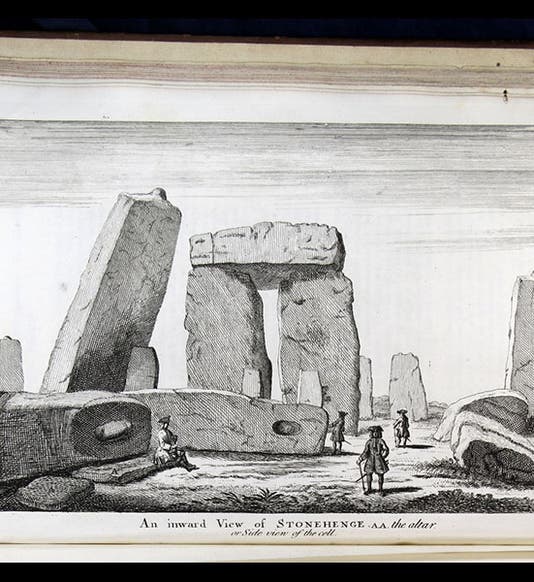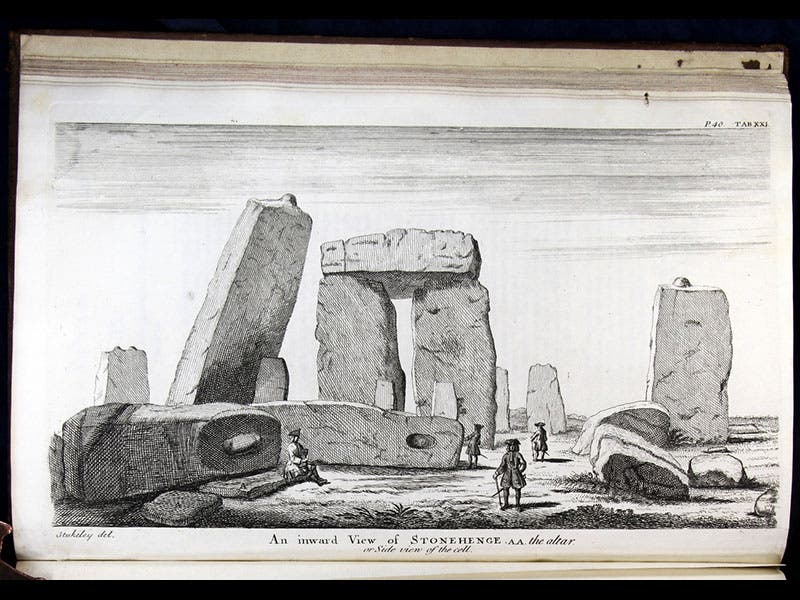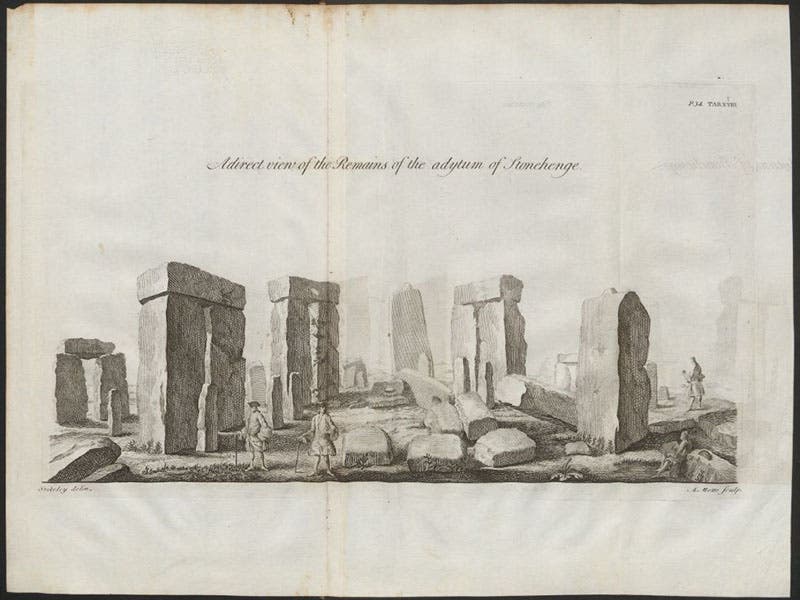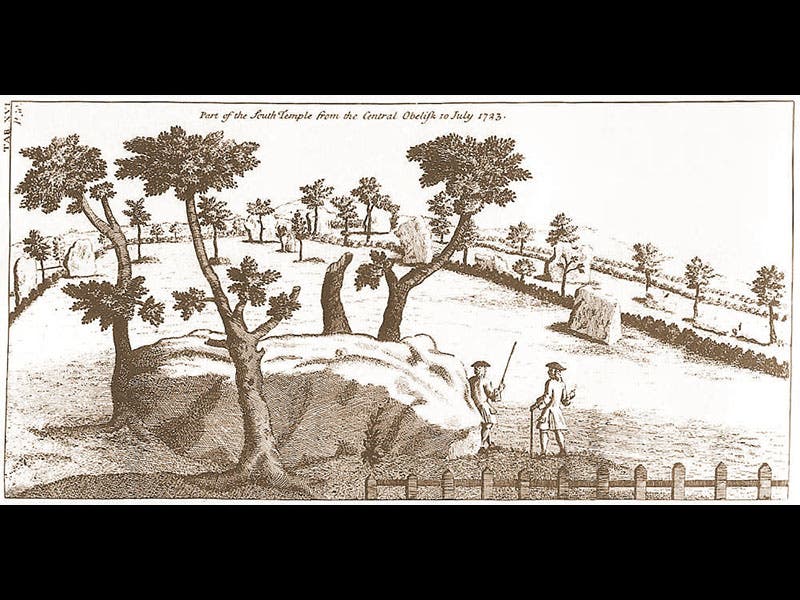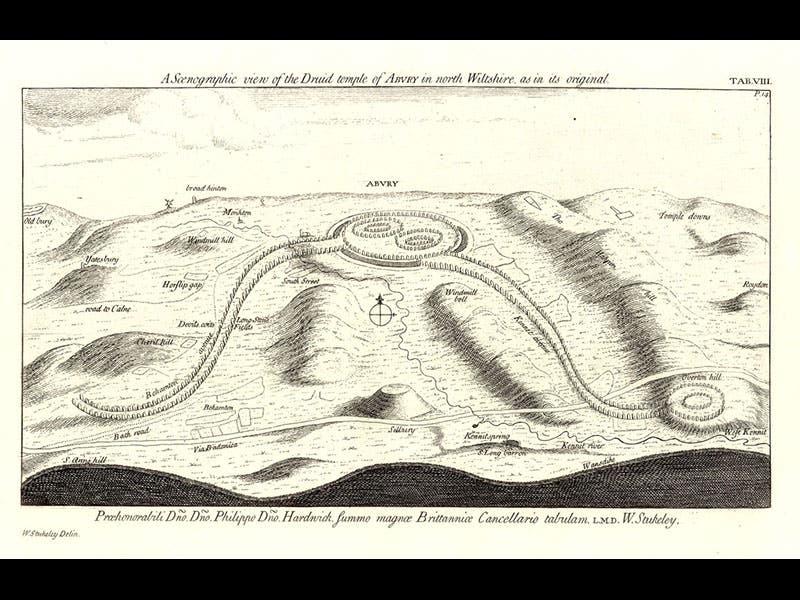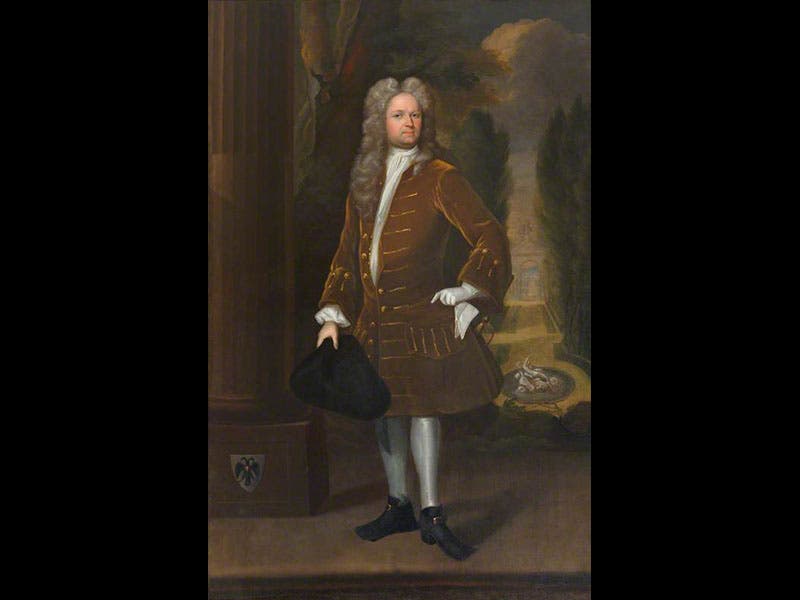Scientist of the Day - William Stukeley
William Stukeley, an English antiquarian, died Mar. 3, 1765, at age 77. Stukeley is one of several who might be considered the father of British archaeology. Born in Lincolnshire (Isaac Newton's home county), Stukeley came to London to study medicine, but he became distracted by antiquities, and in 1717, he helped revive the Society of Antiquaries, which had been moribund for almost a century. Distressed with the lack of attention being paid to Roman Britain, he also founded the Society of Roman Knights in 1722, where all the members took Celtic names (Stukeley's was Chynodonax). It was then that Stukeley discovered Stonehenge. Several previous scholars had studied the monument, men such as John Aubrey and Walter Charleton, and they had even written books on it. However, nearly everyone thought that Stonehenge had been built by either the Romans, the Saxons, or the Danes. Stukeley made a meticulous survey of Stonehenge, noting the position of every stone, ditch, and barrow, and concluded that it had been constructed by pre-Roman Celts. Stukeley was also the first to notice that Stonehenge is oriented such that the main axis is aligned with the summer solstice sunrise
About the same time, Stukeley encountered Avebury, another set of stone circles north of Stonehenge in Wiltshire. Between 1721 and 1724, he spent all his time at the two sites, mapping them in detail, which was fortunate in the case of Avebury, since many of the stones were soon after removed as a source of building materials (the large stone in the foreground of the third image, known as the Obelisk, is an example of a stone that was later broken up and taken away). Stukeley even attempted to reconstruct what Avebury might have looked like several millennia ago (fourth image). He was unusual for the time in being prepared to accept a long pre-Roman period for Celtic Britain, which means he had a grasp of prehistoric time that far exceeded that of his contemporaries, most of whom were hard pressed to squeeze any meaningful activity between the Romans and the Great Flood.
Later in life, Stukeley became convinced that Stonehenge and Avebury were built by Druids as sites of ritual ceremony, and that theme took over his two books, Stonehenge (1740) and Abury (1743), so that he is often remembered only for his Druid obsession. But those books are dominated just as much by his passion for accurate illustrations. Stukeley was a gifted artist, with a real interest in the landscape of antiquity, and very few before or since have left such a rich visual legacy of the ancient countryside, as the four selections above attest.
As for Stukeley himself, there is an oil portrait to be seen in the Society of Antiquaries at Burlington House in London (fifth image).
Dr. William B. Ashworth, Jr., Consultant for the History of Science, Linda Hall Library and Associate Professor, Department of History, University of Missouri-Kansas City. Comments or corrections are welcome; please direct to ashworthw@umkc.edu.

